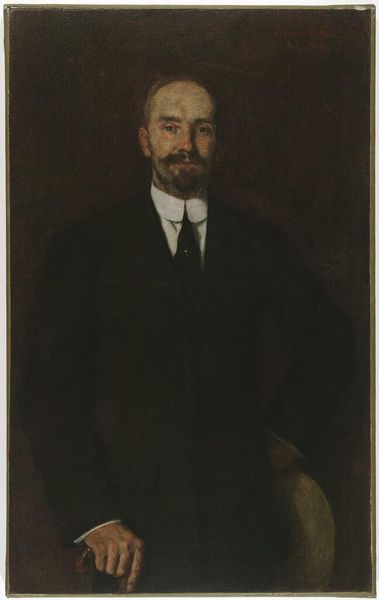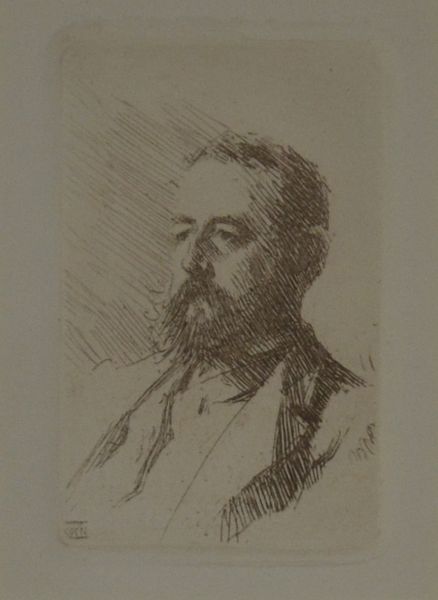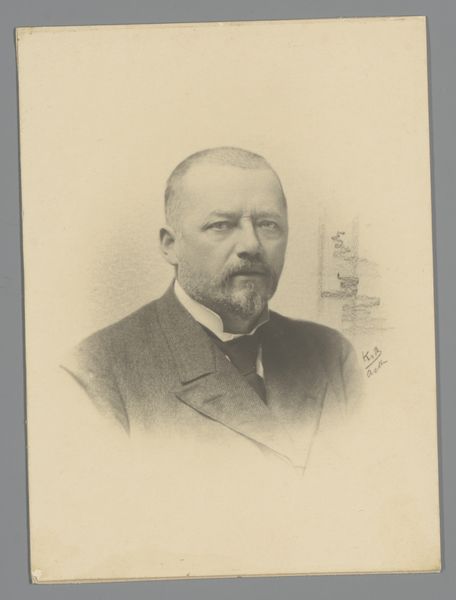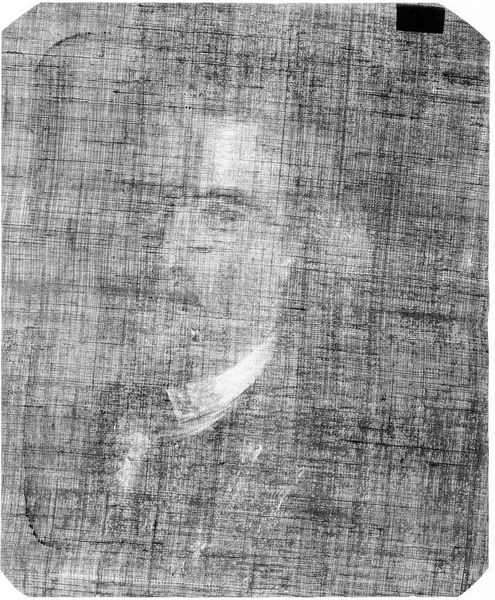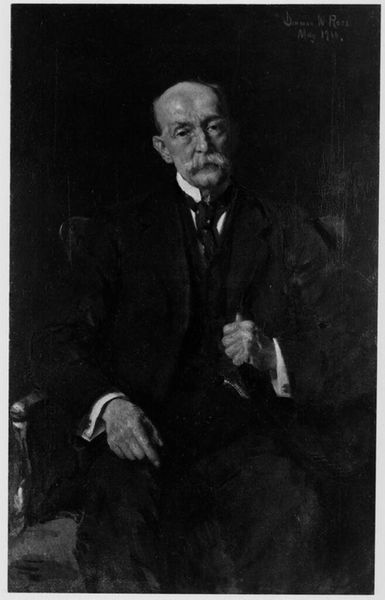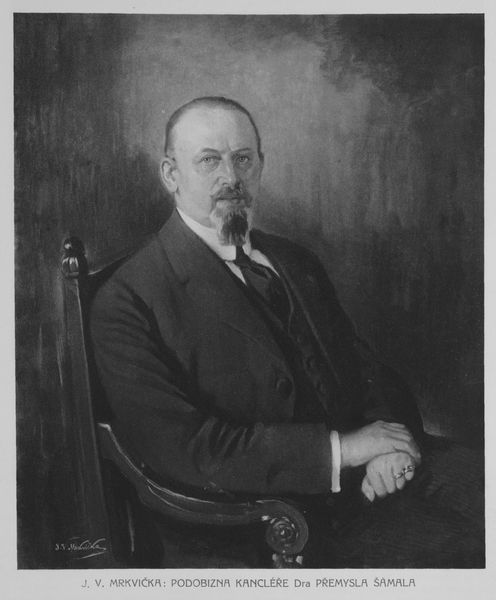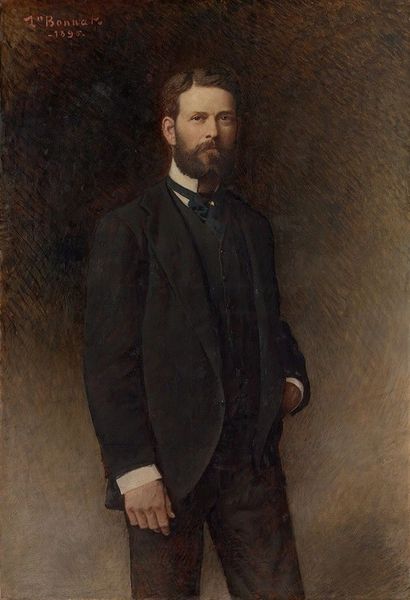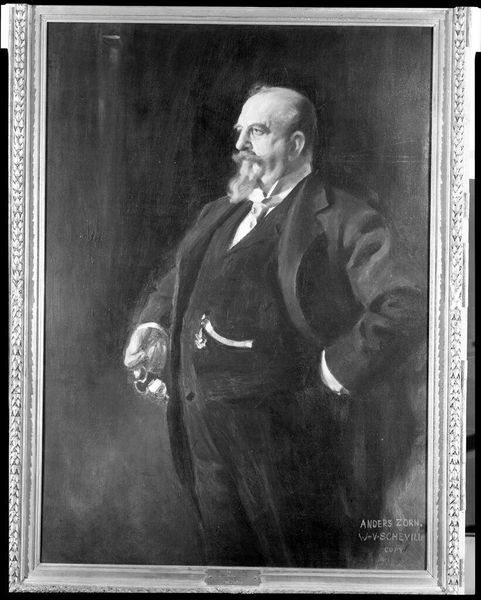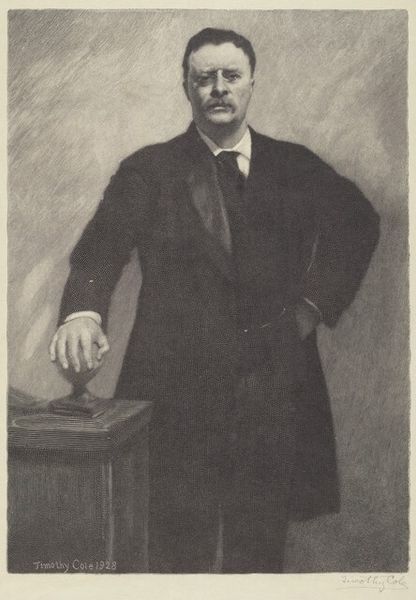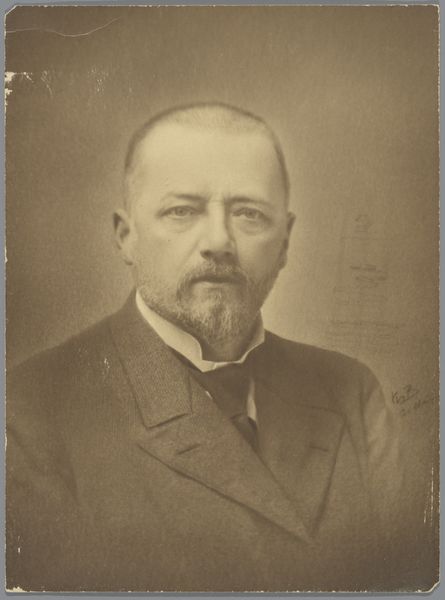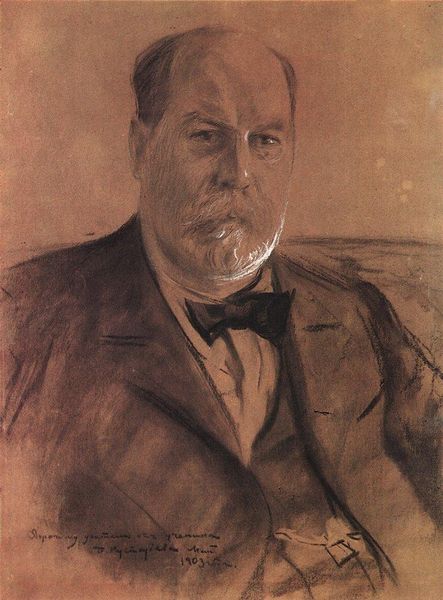
#
portrait
#
black and white photography
#
black and white
#
monochrome photography
#
academic-art
#
monochrome
#
realism
#
monochrome
Copyright: Public domain
Curator: Good morning. Today we're considering Thomas Eakins's photographic portrait of George F. Barker from 1886. It's a stark piece, isn't it? Editor: Stark is the word. The somber tones and shadowy background create a palpable sense of gravity, almost bordering on melancholy. There is very little visible here, almost nothing that distinguishes Barker from the tenebrous dark surrounding him. Curator: Eakins’ choice of monochrome highlights form and texture over color. The effect creates a sense of timelessness. He aimed for realism, for portraying Barker not just as he looked, but perhaps hinting at something deeper. Editor: Precisely. The photographic portrait arose alongside the development of modern ideas of psychology, when the goal of a painted or sculpted portrait was not merely verisimilitude but insight into inner life. One could argue that it suggests how Barker wanted to be perceived by the public or, more plausibly, by his peers. It reflects a very late-Victorian somber sensibility. Curator: You're right. The visual vocabulary does indicate a professional gravitas. And we should consider who George Barker was: an accomplished chemist and physicist who influenced the understanding of spectra analysis. These weren't frivolous images but were serious, considered character studies meant to circulate among an intellectual community. Eakins had an impulse to make works like this available in many forms and public fora. Editor: Yet there's something unsettling about the eyes that compels attention, though a little obscured by shadow. There's a weight, an introspective quality, perhaps hinting at the burden of knowledge or the anxieties of the era. Curator: The symbol of that heavy responsibility is something very interesting, now that you point it out. There’s a real engagement with character here and even psychological depths. Eakins and Barker collaborated and agreed on this as the correct mode to circulate, as befitting Barker's stature in science. Editor: I am left pondering the role of photography as an intimate recorder of both external appearance and internal disposition. The two become increasingly intertwined, as here. Curator: For me, it shows the powerful potential of realist art not just to capture likeness, but to also explore character in the era that saw the rise of modern understandings of personality.
Comments
No comments
Be the first to comment and join the conversation on the ultimate creative platform.

